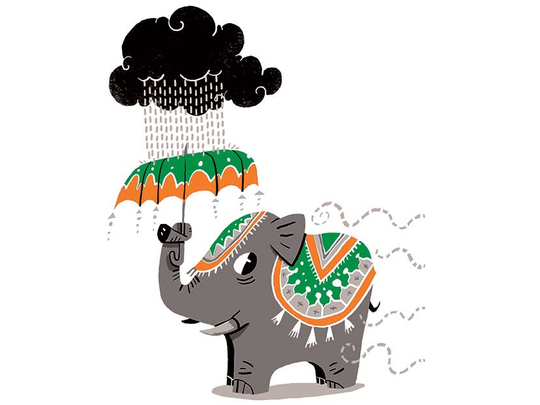
In one fell swoop, India lost the coveted title of world’s fastest growing economy when it reported a GDP growth of 6.1 per cent for the January-March quarter, considered to be the lowest since the last quarter of 2014. For the first time since 2015, India trailed China, even through India’s GDP growth rate for the 12-month period (India follows April to March financial year) stood at 7.1 per cent, very much in line with analysts and stock market expectations.
At the height of demonetisation in November last, former Prime Minister Manmohan Singh predicted doom and gloom for the economy. So much so, he predicted a 2 per cent dip in growth and castigated Prime Minister Modi as the destroyer of Indian dreams for undertaking a “monumental mismanagement”.
This is a classic case of the glass being half full, but everybody out there would want to believe that it is half empty. Despite sucking out 86 per cent liquidity from the economy, if India still managed to grow at 7.1 per cent annually, then it deserves kudos. Consider this: all the possible unaccounted money is now part of the “system”. From here on there is no looking back, rather there are bigger triggers such as GST (goods and service tax) and RERA (Real Estate Regulatory Act), which have come into force to provide the much needed impetus.
Let’s have a rational mind to crystal gaze tailwinds and headwinds in store for the economy. Tailwinds in an economic situation represent events that help to increase the growth, for instance having good monsoons, lower oil prices, increase in exports, etc. Typical headwinds would be in the nature of a credit crisis, rising costs, natural disasters, etc, and slowing down growth.
Here’s looking at the possible tailwinds:
* GST
Touted as the biggest indirect tax reforms since Independence, GST has the potential to enhance India’s GDP by up to 4.2 per cent according to a research note by the US Federal Reserve. A substantial Rs6,500 billion (Dh371 billion) could be added to the GDP each year — a sum greater than the central government’s annual borrowing.
* Rate cuts
Thanks to demonetisation, banks are flush with funds, and along with the low inflation rate, this is making an interest-rate cut imminent. Come September and the Reserve Bank of India will have to look into such cuts to provide a stimulus to the economy.
* Power initiatives
From being power deficient to power surplus is one big leap of faith. With 8.8 gigawatt (GW) of capacity addition projected for the year ahead, India is set to become the third-biggest solar market globally in 2017, overtaking Japan.
India’s solar power tariffs have already taken a nose dive with bidders quoting a price below Rs2.75 per unit to set up 250 megawatt (MW) of capacity at Bhadla in Rajasthan. The solar space has seen a significant decline in tariffs from the Rs10.95-Rs12.76 per kilowatt-hour (kWh) in 2010-11.
India’s growing green economy has been fuelled by the government’s ambition around clean energy. India plans to generate 175GW of renewable energy by 2022. Of this, 100-GW is to come from solar power projects, 60-GW from wind power projects and balance from electric.
* Agriculture surplus
The Indian Meteorological Department has predicted a normal monsoon this year, which augurs well for agriculture and allied sectors. According to the Central Water Commission data, most of the 91 reservoirs in the country have more water than expected during pre-monsoon weeks. A normal monsoon under such circumstances is likely to propel agriculture related sectors growth and monsoon-led consumption in the economy.
* RERA
India’s tryst with Dubai-style Real Estate Regulatory Authority (RERA) is expected to yield two things that have marred this sector for long: a) provide the much needed trust between customers and builders and b) weed out cash transactions and the omnipresent “black money “from real estate deals. Overall, the real estate sector will reorient itself to the extent that it will once again become the backbone of the economy.
And now for the headwinds. The resolution of staggering levels of bad loans is a work in progress. With the non-performing assets ordinance, the government has empowered Reserve Bank of India to ask banks to initiate insolvency proceedings to recover bad loans, and promised more measures to overcome the non-performing assets crisis.
Mounting bad loans also affect the capacity of the banking system to support growth. Sputtering the growth engines are sectoral issues plaguing pharmaceuticals and IT, both being haemorrhaged by US policies. Not to forget the dragon raising its head on the oil import front.
Nonetheless, gone are the days when Indian economy was judged merely on the basis of its domestic story. Today’s India is constantly pushed into a narrative which is global and comparative in nature. It is in this context that most Indians believe that their country is better placed.
Their confidence and trust provides reassurance to everyone in the eco-system who keep chugging the economy along — 7.1 per cent to be precise.
— The writer is Director, BrandMark Group Dubai.












